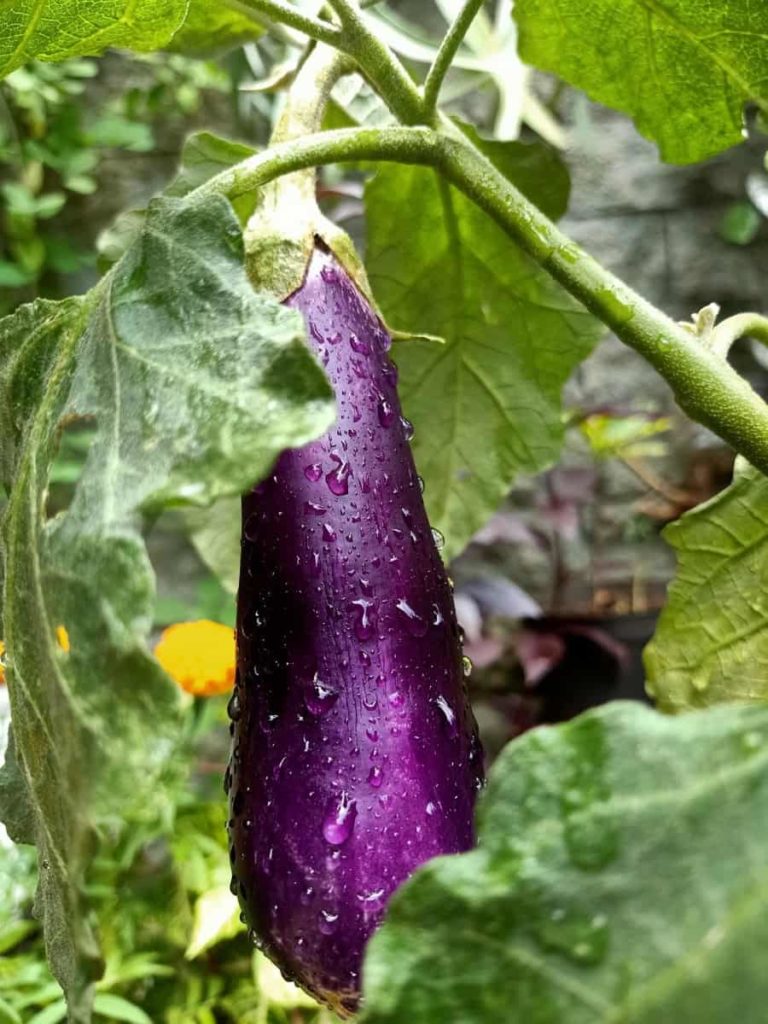Eggplant is a commonly grown hot weather vegetable noted for its great taste, shape, and dark violet color. Wide varieties can also be grown in the home garden. They consist of different colors and sizes, which can all add unique flavor to many recipes or dishes. Eggplant problems and pests can occur from time to time when growing Eggplant; however, with proper care, you can also prevent them. Let’s check out 21 common Eggplant problems below.
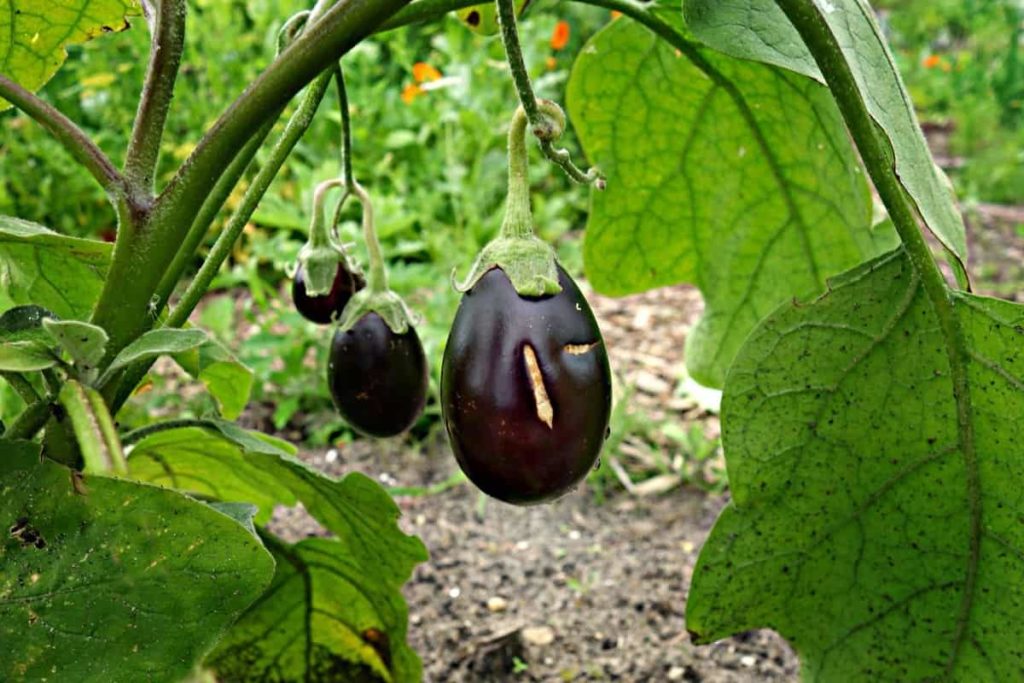
Bacterial and fungal diseases can affect your Eggplant patch, leading to imperfect fruits, marred leaves, reduced production, and sometimes plant death. Unfortunately, identifying and treating these pathogens can be difficult as many look the same.
To avoid fungal and bacterial diseases, rotate crops every year, give enough space to each plant, clean the bed at the end of the growing season, choose proven disease-resistant varieties, and keep a close eye on the problems, especially during wet weather. In addition, treatment with fungicides may be successful in fighting some of these pathogens.
21 common Eggplant problems
Eggplant leaves are wilting
When you over-water Eggplant, root rot affects your plant, which prevents plants from taking water and causes them to wilt. Underwatered plants also wilt, grow poorly and produce pithy fruits.
Solution – Eggplant needs about 1 inch of water a week, and more in hot or airy weather or when growing in sandy soil.
Eggplant plant is not growing
Pests
Many garden pests like Eggplants cause various growth problems. The aphids and cutworms chew the seedlings on the ground level. White fly weakens the Eggplant by sucking the juice from the leaves. Flea beetles chew Eggplant leaves, causing small holes. This damage prevents the Eggplant seedlings from growing.
Solution – Push a plastic or cardboard collar around the stem an inch in the soil to prevent damage to the stem. Spraying plants with water helps wash these insects, including ladybugs and flies. Organic insecticidal spray can help eliminate flies from the leaf. Frequent weeds and companion planting solve the problem of flea beetles.
Soil condition
For extraordinary growth, Eggplants require well-drained soil rich in nitrogen and phosphorus.
Solution – If your soil lacks these conditions, your Eggplants will grow the leaves but not give any fruit. To add nutrients to the soil, you should spread compost or manure in your garden.
Temperature
The leaves of your Eggplants can roll downwards when the temperature rises above 32°C. The growth of plants also stops due to extreme heat.
Solution – If so, water your Eggplants regularly, ensuring the water reaches the depth of the soil. If the temperature is too cool, usually below 18°C, the flowers will fall, and you will not get any fruit. Cold weather also stunts the growth of Eggplants.
In case you missed it: Soil Preparation for Eggplant/Brinjal: Best Soil Mix, pH, Compost, and Recipe
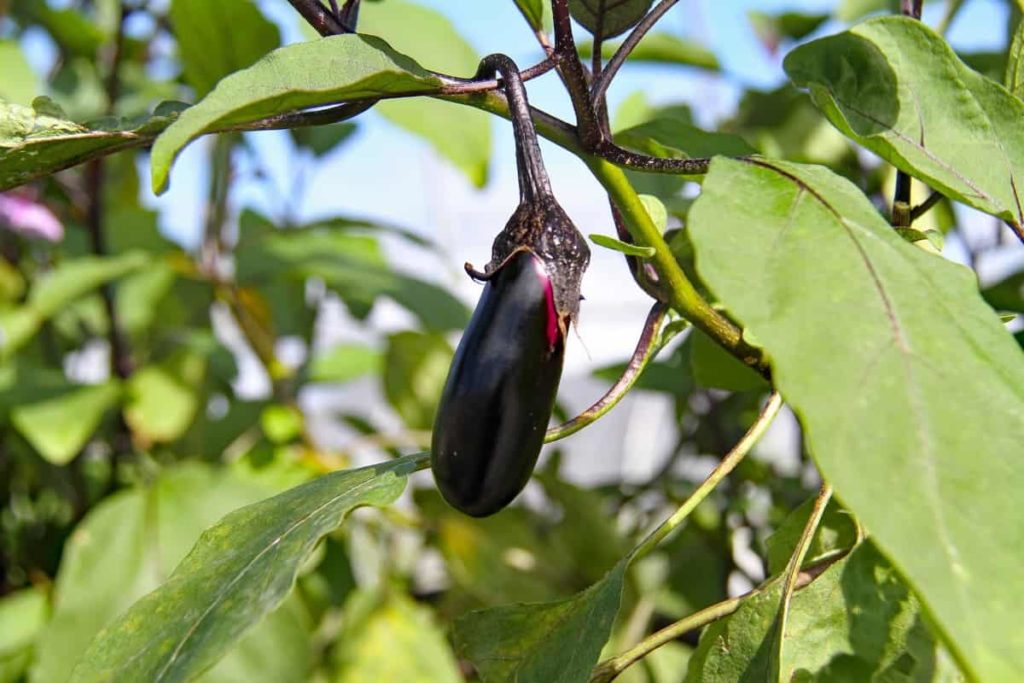
Sunlight
Lack of sunlight causes stunted growth in the Eggplants. They need the full sun all day long.
Solution – If your garden doesn’t provide full sun, consider putting Eggplant in containers that you can move to sunny areas.
Pollinators
Each Eggplant flower has male and female organs that pollinate themselves to produce fruits. Bees and air help flowers move pollen from male to female.
Solution – If your Eggplants are not growing, you can help pollinate flowers by tapping them on plants to spread pollen. You can also use a paintbrush to help with pollination. Once your Eggplants include moist, nutritious soil, temperatures ranging from 21°C to 29°C, and companion plants, your garden should produce plenty of tender, well-formed Eggplants.
Eggplant leaf roll
Low temperature can cause the roll of Eggplant leaves. It can be seen when leaves start sprouting, and you can see that the leaves start rolling on their own, although a known disease does not cause it, so it can be due to the reaction of the weather or temperature.
Solution – The most common reason for rolling Eggplant leaves is not to water them properly. The plants have well-watered to prevent the rolling of leaves. If you’re not taking the time to water your Eggplants as you should, you can see that the Eggplant leaves start to roll downwards.
Poor quality Eggplants
Poor quality Eggplant fruits are usually associated with low humidity and high-temperature conditions. In addition, the more mature Eggplant fruit will be dull-colored and often produce a bronze appearance.
Solution – For maximum production, remove the Eggplant fruit before fully maturing to develop the extra fruit.
In case you missed it: Best Fertilizer for Eggplant: Homemade, Liquid, Organic, Compost Manure, NPK, and Schedule
Eggplant leaves turn yellow
Yellow leaves are often caused by maintenance problems such as irregular water or lack of nitrogen in the soil.
Solution – Apply 2 to 4 inches of organic mulch and water these plants more frequently, preferably in the morning. Eggplants that develop to turn yellow overall may need nitrogen soil tests will immediately reveal if this is the situation. A dose of balanced fertilizer, such as 10-10-10, will solve this situation immediately.
Produce little or no fruit
Another potential problem you may face is that plants still see a fresh one with green leaves produce little or no fruit. It can be caused by a lack of essential elements like phosphorus in the soil composition.
Solution – Add aged compost to the planting bed before planting and side-side the plants with aged compost. If the night temperature is cool, place a wire cage around the Eggplants and cover the cage with plastic at night. Increase pollination and fruit production by lightly taping plants to ensure pollen distribution.
Eggplant flowers are dying
When the Eggplant plant is stressed, its flowers will dry up and fall without producing fruit. The most common reason for Eggplant coming under stress is dehydration.
Solution – Your Eggplant needs at least 1 inch of water a week, more in very hot weather.
Eggplant leaves turn white
The common reason for Eggplant leaves turning white is the sun’s burns. White starts as a small spot in this instance and eventually spreads to engulf the entire leaf. In some cases, this looks like you’ve sprinkled a bottle of bleach all over the garden.
Solution – To prevent sunburns, ensure careful when transplanting and let the plants harden. Also, keep your bed’s weeds and insect-free and ensure that the soil is well-drained and healthy. By doing so, you can guarantee a season of almost bright green leaves and amazing fruit.
Diseases
Cercospora leaf spot
This fungal disease affects Eggplant leaves and stems; fruit is unaffected. Symptoms of this disease are small, round yellow lesions on the leaves. Eventually, the lesions develop soft, gray foam in the center with a dark brown ring around its exterior. Severe disease can cause defoliation and reduce fruit size and production.
Solution – This disease survives in winter in plant debris, and when spring comes, spores are spread by wind, rain, people, and animals. To keep spores away from plants, mulch newly planted seedlings with straw or prevent the infected soil from splashing onto the leaves.
In case you missed it: Eggplant Companion Plants, Planting Guide

Damping-off
Symptoms of damping-off disease are dark, water-soaked lesions on the base of young seedlings or leaf growth. Eventually, the infected seedling falls over. These fungi can survive long periods in soil, plant debris, and weeds.
Solution – Keep the wind circulating the seedlings and water from the bottom whenever possible. Sterilize pots before reusing them and remove any symptomatic seedlings to prevent the disease from spreading.
Alternaria rot
The fruits affected by this fungus produce small, grey, water-soaked lesions, often starting at the lower end of the fruit or the place of injury. Eventually, the lesions increase in size and produce blurred-looking spots of seeds.
Solution – Discard the affected fruits as soon as they see them and prevent the disease from spreading to other fruits by using organic fungicides.
Anthracnose fruit rot
This fungal disease often remains without symptoms until the fruit is ripe and ready for harvesting. The disease begins as small, submerged, gooey spots that eventually merge into large spots. When the seed is set a few days later, the integrated circles cover the lesions, and you can find spots like orange or pink jelly of seeds covering the lesions.
Solution – Prevent the fruit from touching the soil and harvest it before over ripe. Remove the affected plants from the garden, throw them away, and plant them with disease-free seeds.
Fusarium wilt
Fusarium wilt symptoms often start with bending leaf petioles. Sometimes a branch can wilt before the rest of the plant. This wilting often begins with lower leaves in Eggplants, rapidly developing the plant until everything falls. Unfortunately, it can often kill the whole plant before reaching maturity.
Solution – Like many other diseases, it favors warmer soil and more moisture. If fusarium wilt is a problem for you in the past, make sure to rotate crops and try to grow in the raised beds to promote good drainage.
Southern blight
This disease can attack both seedlings and mature plants. In seedlings, it causes moistness on the soil surface, while in mature plants, it can affect the entire plant causing deep brown lesions on or just below the soil line. A distinct feature of the southern blight is the fan-like webs of white fungi threads that develop around rotten stems.
Solution – To help control the southern blight in places where the previous infection occurred, maintain a pH of 7 or above. Deep plowing is also effective.
In case you missed it: Eggplant Gardening Frequently Asked Questions (FAQs)
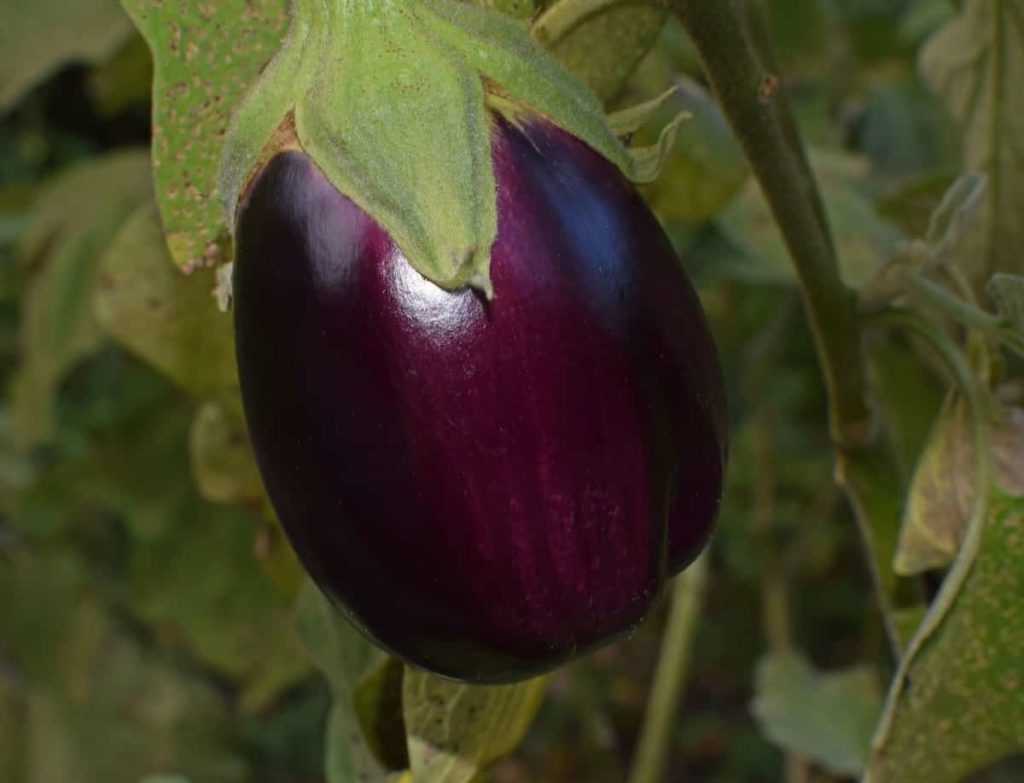
Powdery mildew
Another fungal disease affecting Eggplants is powdery mildew. Fungi produce white, powdery spots on leaves, flowers, and fruits. They can also cause yellow, twisted leaves that eventually fall off plants.
Solution – Use organic fungicides containing sulfur to prevent and treat existing infections.
Pests
Aphids
Aphids are small, soft-bodied pests that stick under leaves and plant stems. Cotton aphids and green peach aphids are the most common in Eggplant. Small attacks rarely cause problems, but heavy aphids will cause leaves to turn yellow and have necrotic spots on leaves.
Solution – Spray under your Eggplant leaves in the morning and with high power setting on your hose until the aphids are removed. Low power settings or watering will not correctly remove the aphids.
Colorado potato beetle
Colorado potato beetles eat plant leaves, causing severe damage. Plants are completely defoliated from severe diseases. These insects are difficult to control as they have developed high pesticide resistance.
Solution – Applying Bacillus thuringiensis is a way to control larvae. In addition, pesticides that contain spinosad are effective against adult Colorado potato beetles.
Cutworms
Cutworms are frustrating pests to deal with in your garden, and they love Eggplant. They chew the trunks of the young seedlings and cut them off on the soil line. They are most active at night, so it’s easy to miss them in their garden.
Solution – You will need to use a few techniques, like hand-picking larvae at night. Around the base of your Eggplants, spread diatomaceous earth to prevent the attack of the cutworm.
Flea beetles
The flea beetles produce small holes in leaves that can prevent growth. Seedlings and young plants are the most vulnerable to these insects. Flea beetles eventually eat Eggplant fruits, ruining your crop.
Solution – Covering your young Eggplant seedlings with a floating row cover is a way to prevent flea beetles from capturing your plants. Many prevention measures work well, so use them before these pests find your garden. Pesticides that contain spinosad, permethrin, and carbaryl control these pests in the best way possible, but other organic methods also work.
In case you missed it: Eggplant Growing Tips, Ideas, Secrets, Techniques
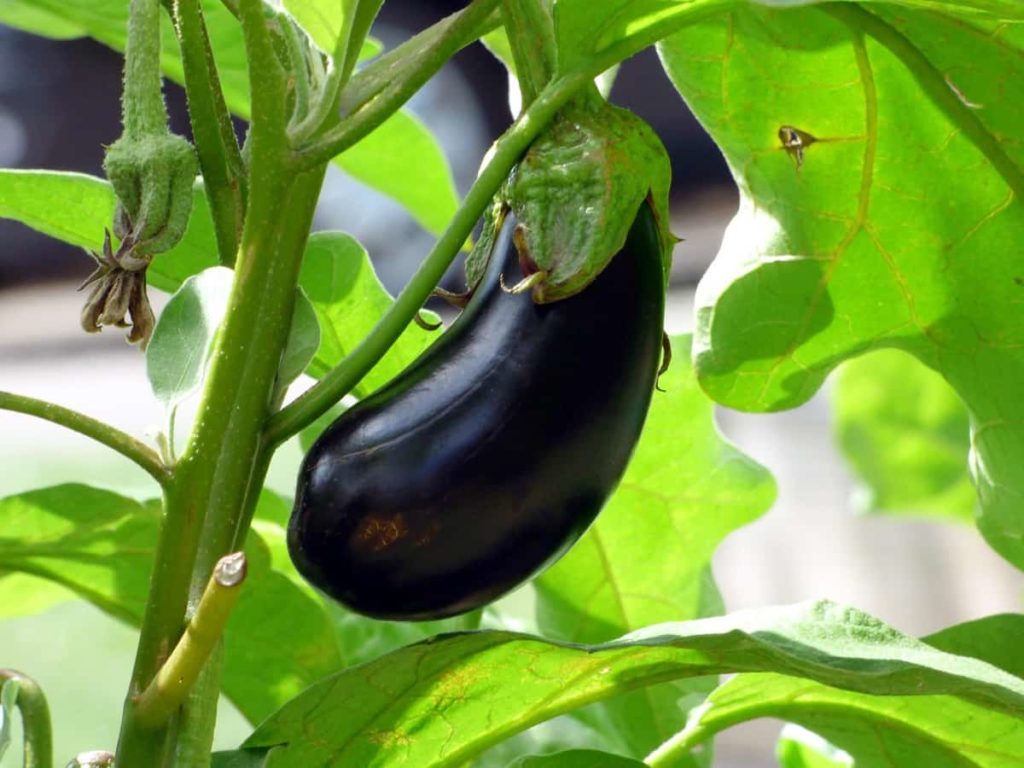
Hornworms
Two common types of hornworms can affect your Eggplants: tomatoes and tobacco hornworms. These insects are huge and cause massive damage to your plant leaves. The severe disease also damages fruits.
Solution – It is completely possible to get rid of these pests. Start by ensuring you regularly inspect your plants for any holes in the leaves or insects themselves, as an attack occurs quickly, and use suitable fungicides.
Stink bugs
Most people assume that stink bugs are the annoying little black beetles that spray foul odor when disturbed. Stink bugs cause pinpricks on the fruits.
Solution – Removing weeds near their Eggplants helps stop these pests like weeds and debris form areas for stink bugs in winter. Introducing insecticidal soaps, kaolin clay, and natural enemies are different ways to eliminate stink bugs in the garden.
- Flower Garden Designs and Layouts for Beginners
- Planting and Spacing Techniques in Papaya: A Beginner’s Guide
- Growing Gold: Essential Techniques for Planting Pineapples
- How to Make Kalanchoe Plant Bushy: Home Remedies and Solutions
- 11 Reasons Why Your Gardenia is Not Blooming: Home Remedies and Solutions
- Eco Elegance: The Guide to Designing a Drought-Tolerant Landscape
- Gardening on a Slope: Strategies for Hillside Landscaping
- Nourish and Flourish: Top Organic Mulches for Thriving House Plants
- Everything You Want to Know about Indian Mogra Flower: Discover Uses and Growing
- Green Thumb Success: Expert Tips for Cultivating Greenhouse Pumpkins All Year Round
- Maximize Growth & Flavor: The Ultimate Guide to Companion Planting in Herb Gardens
- How to Control Rhododendron Problems Naturally: Home Remedies and Organic Ways to Fix Them
- Natural Magic: The Remarkable Benefits of Cinnamon for Plants
- Best Steps to Revive Dying Tulip with Natural and Organic Treatment
- 10 Reasons Why Your Angel Trumpet is Not Blooming: Remedies and Treatment
- How to Fix Periwinkle Leaf and Flower-Related Problems: Natural Remedies and Solutions
- How to Fix Zinnias Leaf and Flower Problems: Discover Natural and Home Remedies
- Organic Steps to Induce Lemon Tree Flowers: A Comprehensive Guide
- Bloom Booster: Crafting the Perfect Homemade Bougainvillea Fertilizer
- Optimizing Growth: A Guide to Applying NPK Fertilizer for Potted Plants
- 10 Best Homemade Fertilizers for Rubber Plant: DIY Recipes and Application Method
- How to Boost Female Pumpkin Flowers: Effective Steps for More Flowers and High Yields
- Transform Your Indoor Garden: Top Benefits of Pink Salt for Houseplants
- 10 Best Homemade Fertilizers for Peacock Plants (Calathea): Easy DIY Guide
- Unlock Blooms: 9 Reasons Why Your Potted Chrysanthemum is Not Blooming
- 8 Reasons Why Your Potted Hibiscus is Not Blooming: Fix it with Simple Solutions
- Unlock Blooms: 9 Key Reasons Your Potted Frangipani Won’t Flower
- 10 Reasons Why Is My Ice Plant Not Blooming: Remedies and Treatment
- 10 Reasons Why My Potted Hydrangea Not Blooming: Treatment and Remedies
- 10 Reasons Why is My Wisteria Not Blooming: Remedies and Treatment
- 10 Reasons Why is My Goldfish Plant Not Blooming: Remedies and Treatment
- Maximize Your Space: Ultimate Guide to Balcony Gardening with Grow Bags
- 10 Reasons Why Your Iris is Not Blooming: Remedies and Treatment
- 10 Reasons Why Your Anthurium Plant is Not Blooming: Treatment and Remedies
- 10 Reasons Why Your Aquaponic Plants Are Not Flowering: Remedies and Treatment
- 10 Reasons Why Your Agapanthus is Not Flowering: Remedies and Treatment
